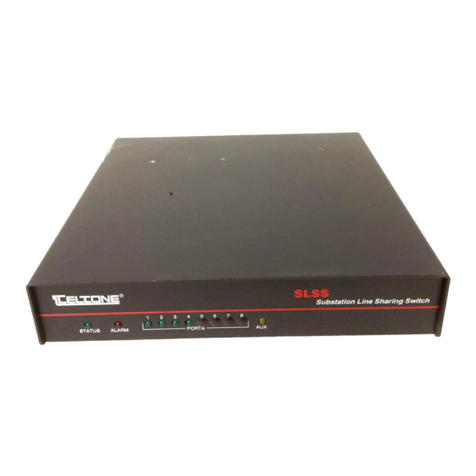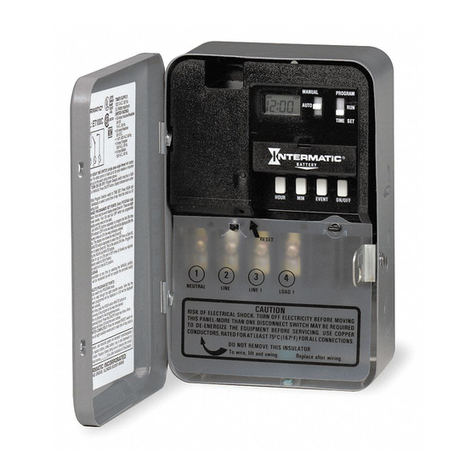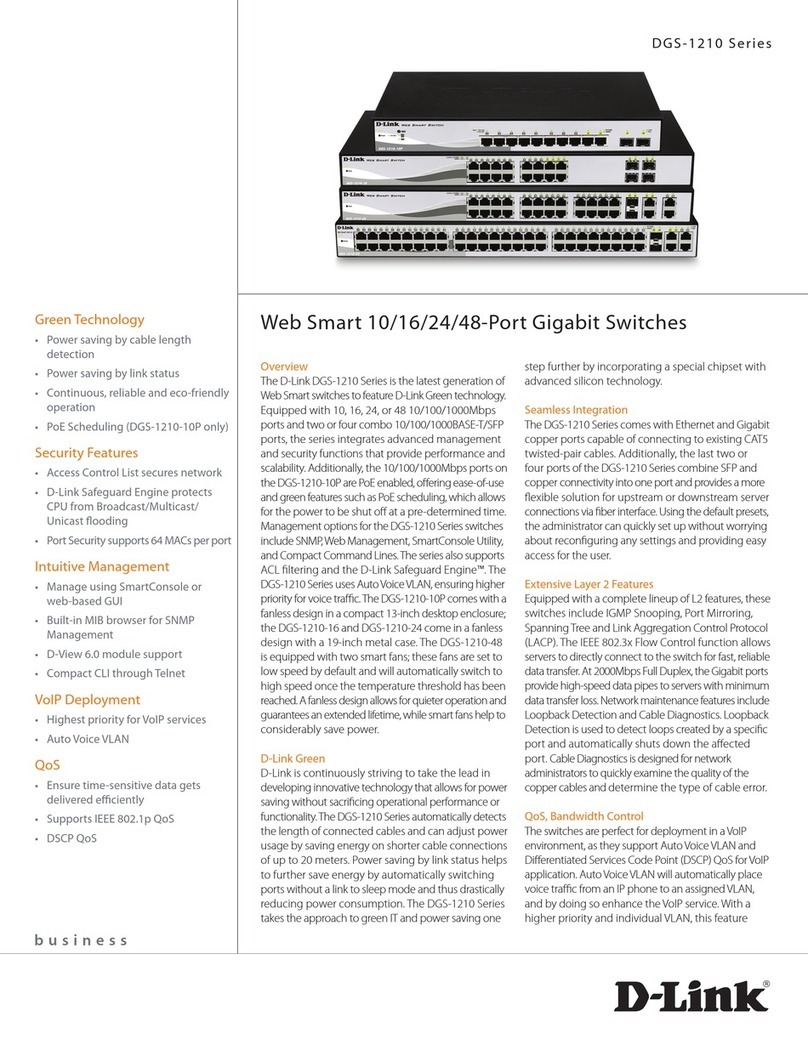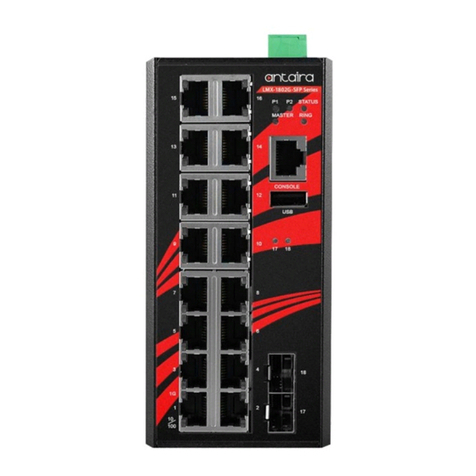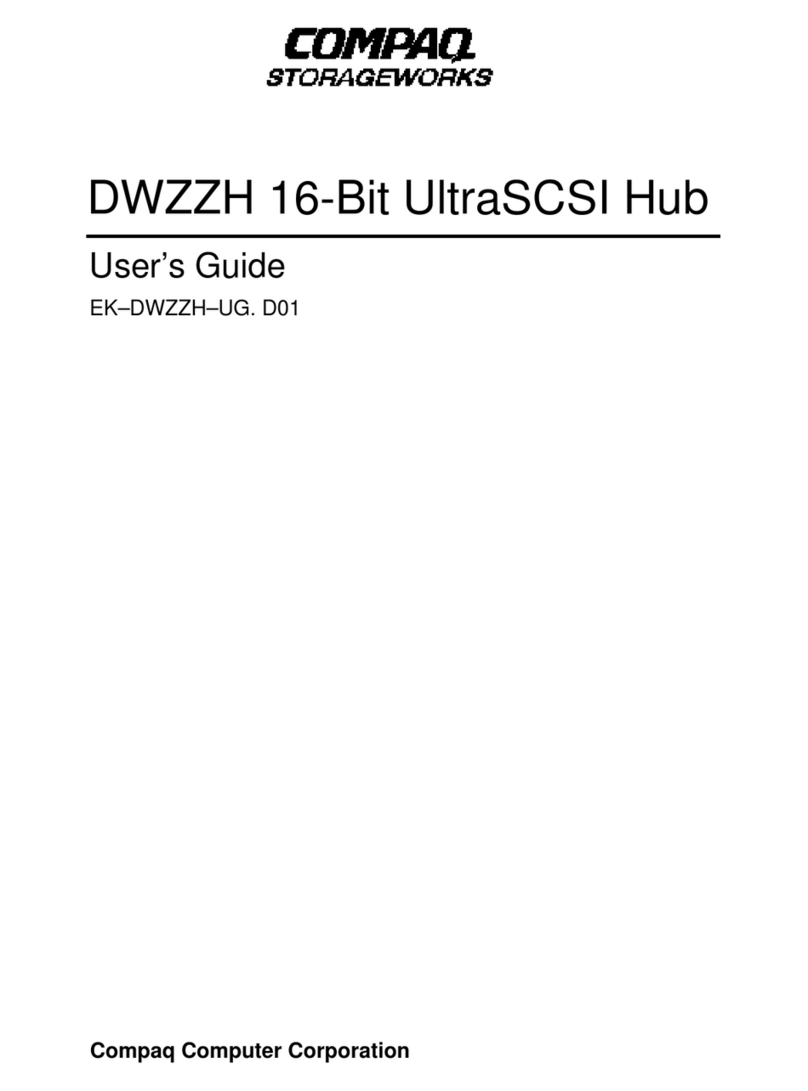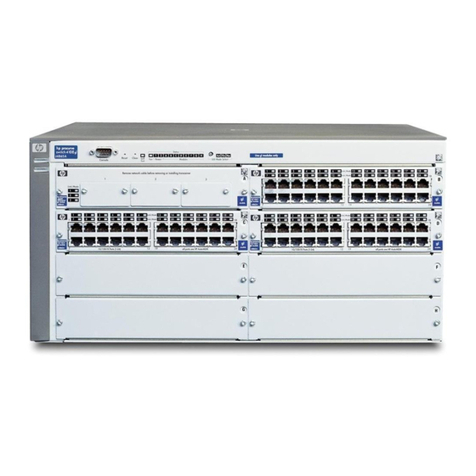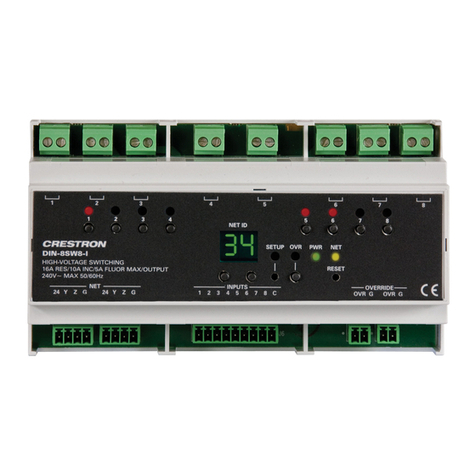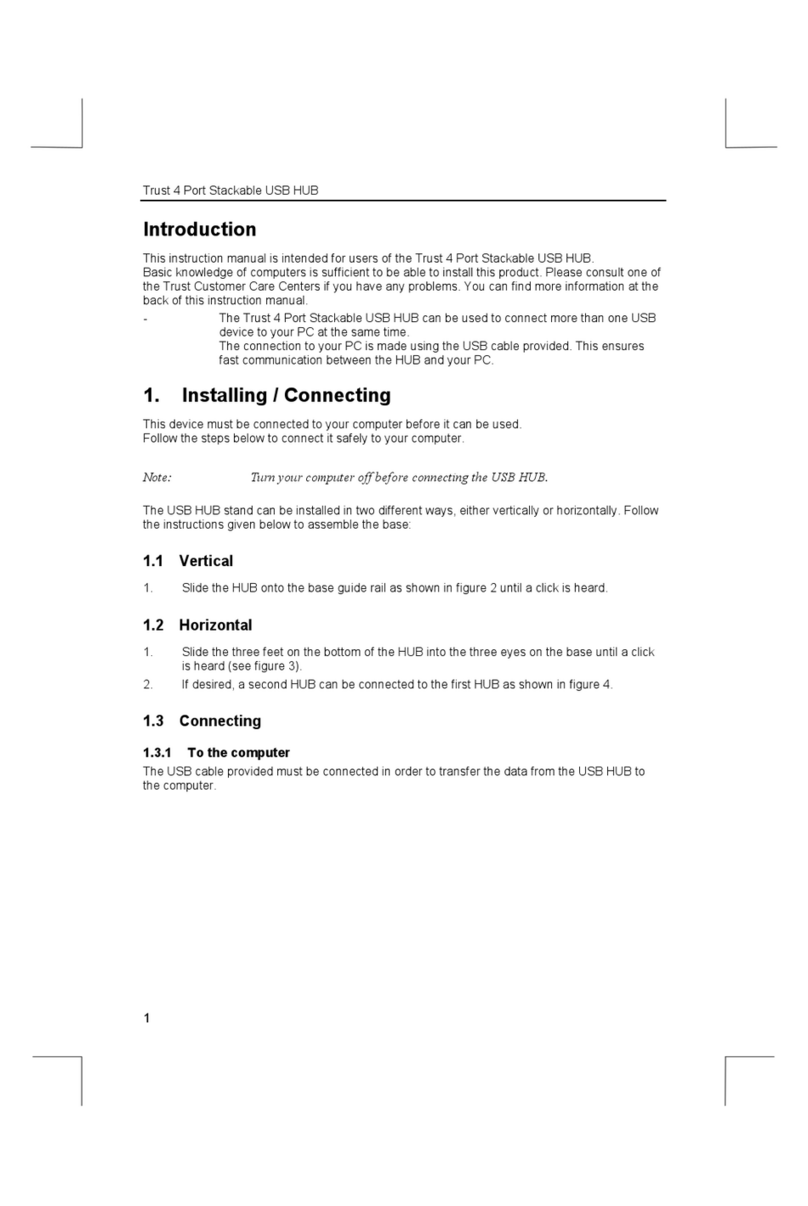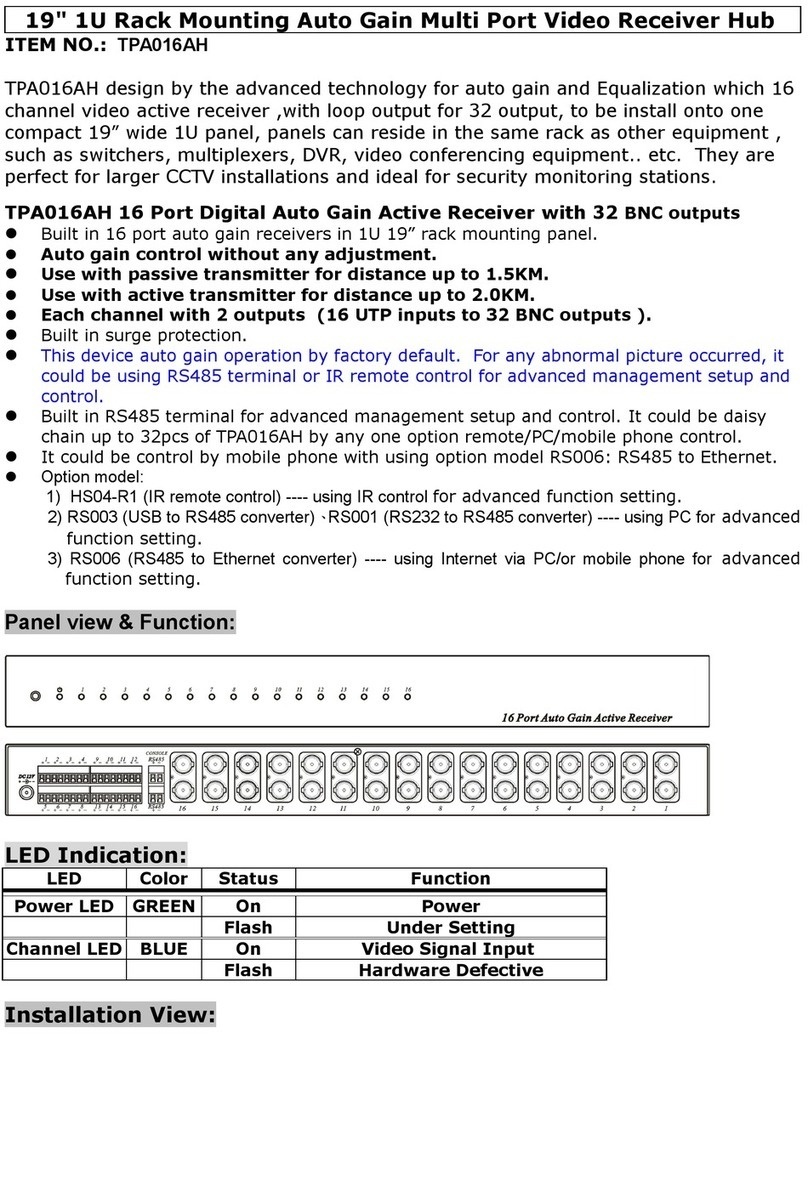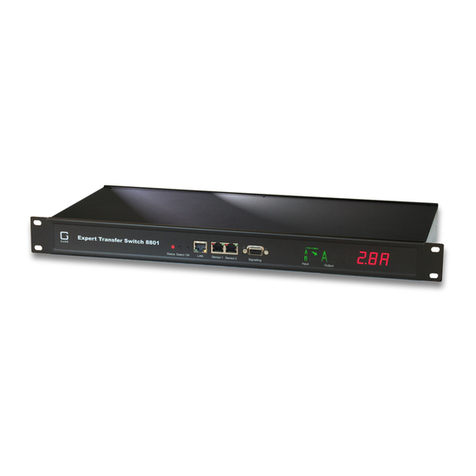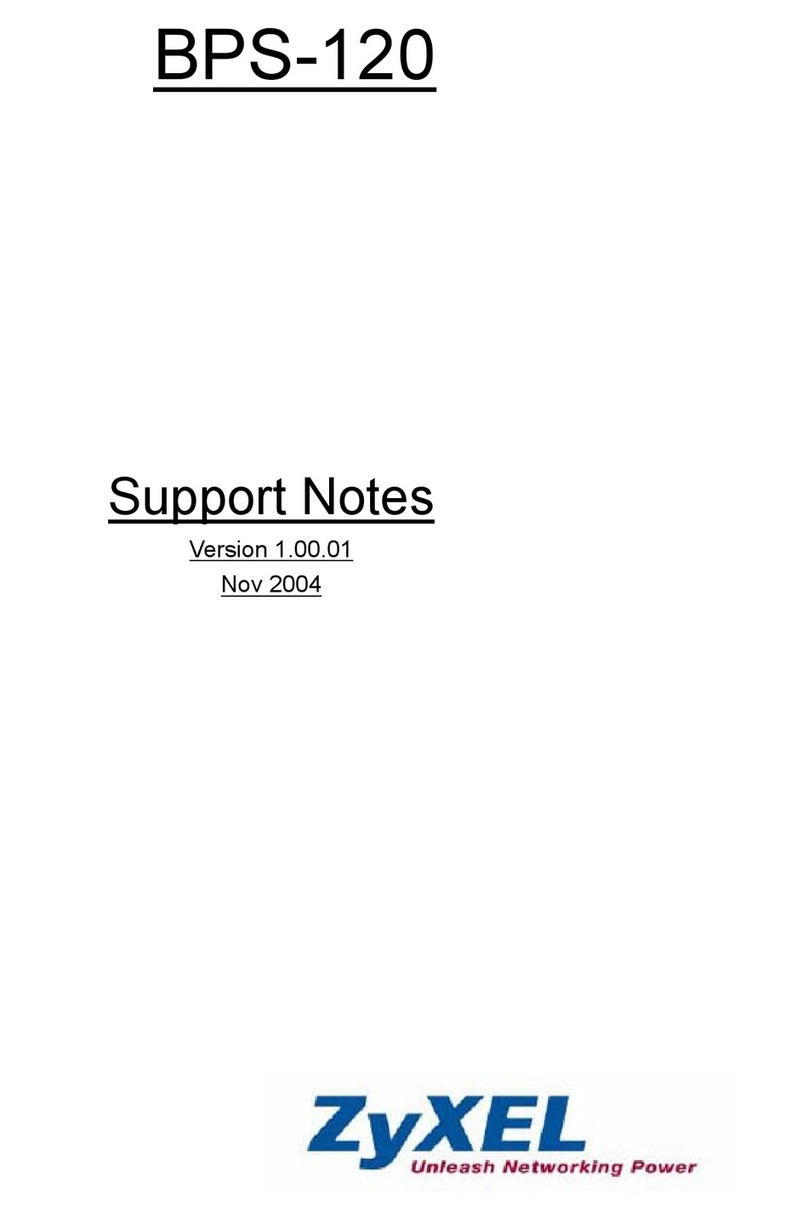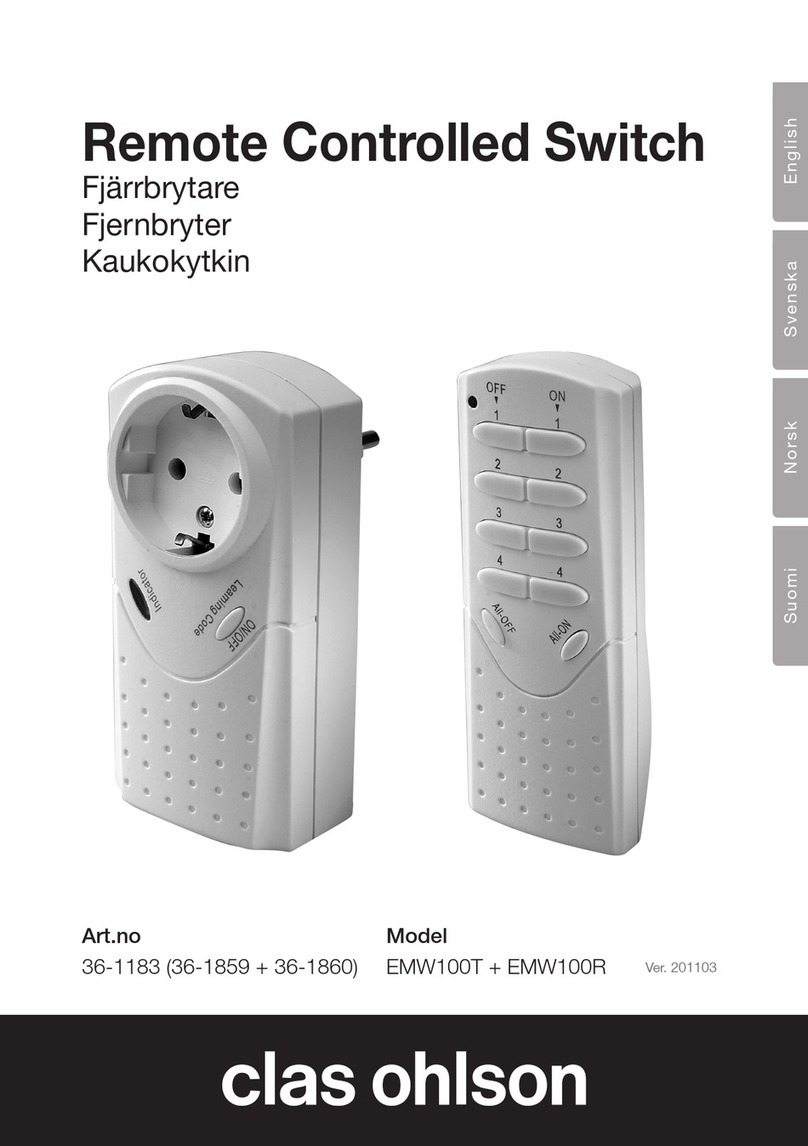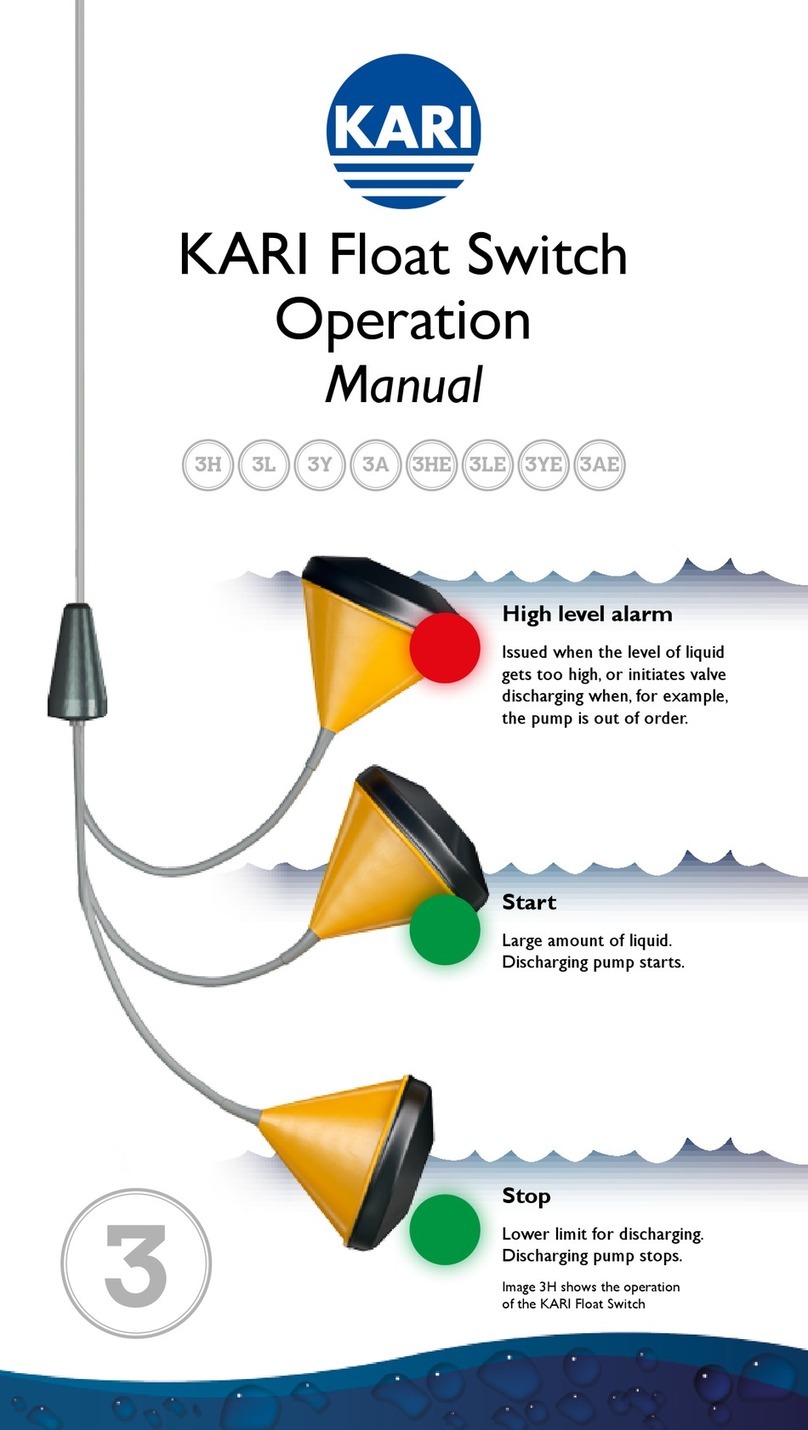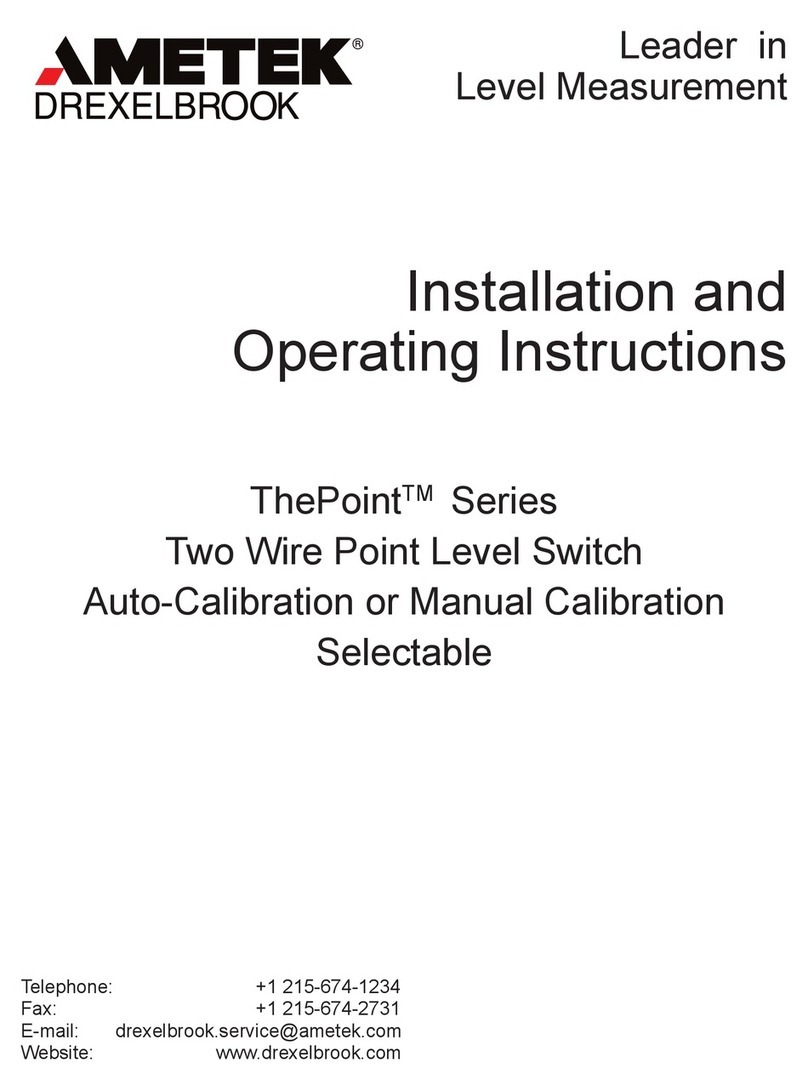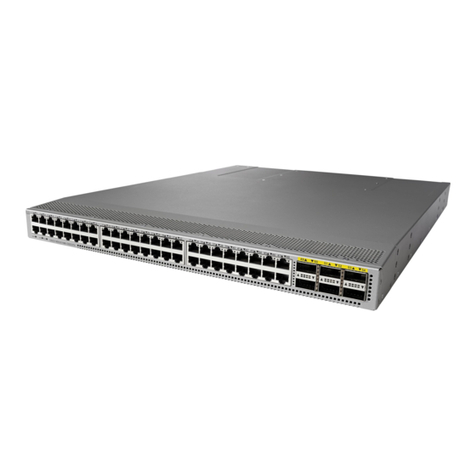Teltone M-392 User manual

Line Sharing Switch (LSS)
M-392, M-393, and M-394
Product Manual
40-400-00015, Rev. F

40-400-00015, Rev. F
Note
This manual covers Models M-392-B-01/02, M-393-B-01/02, and M-394-B-01/02.
Copyright Notice
Copyright © 1993 - 2004Teltone Corporation
All Rights Reserved
Trademarks
Teltone is a registered trademark of Teltone Corporation.
Windows is a registered trademark of Microsoft Corporation.
Other company and product names may be trademarks or
registered trademarks of their respective owners.
Teltone Corporation
Bothell, Washington, USA
Customer Service: 425-951-3388
Technical Support: 425-951-3390
Fax: 425-487-2288
Website: www.teltone.com

Contents
U.S.FCC COMPLIANCE INFORMATION. . . . . . . . . . . . . . . . . . . . . . . . iii
CANADIAN COMPLIANCE. . . . . . . . . . . . . . . . . . . . . . . . . . . . . . . . . . . iv
IMPORTANT SAFETY INSTRUCTIONS . . . . . . . . . . . . . . . . . . . . . . . . . v
SAVE THESE INSTRUCTIONS. . . . . . . . . . . . . . . . . . . . . . . . . . . . . . . . v
About This Manual. . . . . . . . . . . . . . . . . . . . . . . . . . . . . . . . . . . . . . . . . . vi
Conventions Used In This Manual. . . . . . . . . . . . . . . . . . . . . . . . . . . . . . vi
Chapter 1: Getting Started . . . . . . . . . . . . . . . . . . . . . . . . . . . . . . . . . . . . . . . . . . 1
Where to Start . . . . . . . . . . . . . . . . . . . . . . . . . . . . . . . . . . . . . . . . . . . . . 1
Product Registration. . . . . . . . . . . . . . . . . . . . . . . . . . . . . . . . . . . . . . . . . 1
Chapter 2: Overview . . . . . . . . . . . . . . . . . . . . . . . . . . . . . . . . . . . . . . . . . . . . . . . 2
Components. . . . . . . . . . . . . . . . . . . . . . . . . . . . . . . . . . . . . . . . . . . . . . . 2
Figure 1 Typical Application . . . . . . . . . . . . . . . . . . . . . . . . . . . . . . . . . . 2
Programming . . . . . . . . . . . . . . . . . . . . . . . . . . . . . . . . . . . . . . . . . . . . . . 3
Compatibility . . . . . . . . . . . . . . . . . . . . . . . . . . . . . . . . . . . . . . . . . . . . . . 3
Features. . . . . . . . . . . . . . . . . . . . . . . . . . . . . . . . . . . . . . . . . . . . . . . . . . 3
Basic Operation . . . . . . . . . . . . . . . . . . . . . . . . . . . . . . . . . . . . . . . . . . . . 4
Chapter 3: Installing the LSS . . . . . . . . . . . . . . . . . . . . . . . . . . . . . . . . . . . . . . . . 5
Are You Ready?. . . . . . . . . . . . . . . . . . . . . . . . . . . . . . . . . . . . . . . . . . . . 5
LED Indicators . . . . . . . . . . . . . . . . . . . . . . . . . . . . . . . . . . . . . . . . . . . . . 5
Table 1 LED Indicators on the LSS. . . . . . . . . . . . . . . . . . . . . . . . . . . . . 5
Mounting Options. . . . . . . . . . . . . . . . . . . . . . . . . . . . . . . . . . . . . . . . . . . 6
Installing the LSS. . . . . . . . . . . . . . . . . . . . . . . . . . . . . . . . . . . . . . . . . . . 6
Figure 2 Installation Using Jack A. . . . . . . . . . . . . . . . . . . . . . . . . . . . . . 6
Installation on PBX or Key Telephone Systems . . . . . . . . . . . . . . . . . . . 7
Figure 3 LSS Mounted Using Mounting Strap. . . . . . . . . . . . . . . . . . . . . 8
Figure 4 Adhesive Mounting Pads . . . . . . . . . . . . . . . . . . . . . . . . . . . . . 8
Figure 5 Line Sharing Switches . . . . . . . . . . . . . . . . . . . . . . . . . . . . . . . 9
Chapter 4: Teltone Default LSS Operation with Polling Controller . . . . . . . . . . . 10
Programming the LSS . . . . . . . . . . . . . . . . . . . . . . . . . . . . . . . . . . . . . . 15
Using the LSS Programming Commands Table. . . . . . . . . . . . . . . . . . . 15
Table 2 LSS Programming Commands. . . . . . . . . . . . . . . . . . . . . . . . . 16
Table 3 Routing Codes for Polling Controller . . . . . . . . . . . . . . . . . . . . 18
Local Programming . . . . . . . . . . . . . . . . . . . . . . . . . . . . . . . . . . . . . . . . 18
Remote Programming . . . . . . . . . . . . . . . . . . . . . . . . . . . . . . . . . . . . . . 19
Chapter 5: Standalone LSS Operation and Programming . . . . . . . . . . . . . . . . . 20
Figure 5 Standalone Line Sharing Switch . . . . . . . . . . . . . . . . . . . . . . . 21
Using the LSS Programming Commands Table. . . . . . . . . . . . . . . . . . . 25
Table 4 LSS Programming Commands. . . . . . . . . . . . . . . . . . . . . . . . . 26
Local Programming . . . . . . . . . . . . . . . . . . . . . . . . . . . . . . . . . . . . . . . . 28
Remote Programming . . . . . . . . . . . . . . . . . . . . . . . . . . . . . . . . . . . . . . 29
Chapter 6: Advanced Applications . . . . . . . . . . . . . . . . . . . . . . . . . . . . . . . . . . . 30
Cascade Features . . . . . . . . . . . . . . . . . . . . . . . . . . . . . . . . . . . . . . . . . 30
Figure 6 LSS Typical Cascade Application . . . . . . . . . . . . . . . . . . . . . 30
Programming for Cascaded LSS Units . . . . . . . . . . . . . . . . . . . . . . . . . 31
Daisy-chain Operation . . . . . . . . . . . . . . . . . . . . . . . . . . . . . . . . . . . . . . 31
Daisy-chain Features. . . . . . . . . . . . . . . . . . . . . . . . . . . . . . . . . . . . . . . 31
Programming for Daisy-chained LSS Units . . . . . . . . . . . . . . . . . . . . . . 32
Figure 7 Daisy-chain LSS Application . . . . . . . . . . . . . . . . . . . . . . . . . . 32
Table 5 Routing Codes . . . . . . . . . . . . . . . . . . . . . . . . . . . . . . . . . . . . . 33
Reference Manual Contents
40-400-00015, Rev. F Pagei

Daisy-chain Remote Programming . . . . . . . . . . . . . . . . . . . . . . . . . . . . 33
Table 6 Remote Programming Daisy-chained LSS Units . . . . . . . . . . . 33
Alternate Telephone Connection . . . . . . . . . . . . . . . . . . . . . . . . . . . . . . 34
Figure 8 Installation Using Jack B. . . . . . . . . . . . . . . . . . . . . . . . . . . . . 35
Chapter 7: Warranty, Troubleshooting, and Technical Support . . . . . . . . . . . . . . 36
Warranty Information . . . . . . . . . . . . . . . . . . . . . . . . . . . . . . . . . . . . . . . 36
Troubleshooting . . . . . . . . . . . . . . . . . . . . . . . . . . . . . . . . . . . . . . . . . . . 36
Technical Support . . . . . . . . . . . . . . . . . . . . . . . . . . . . . . . . . . . . . . . . . 36
Return Procedures. . . . . . . . . . . . . . . . . . . . . . . . . . . . . . . . . . . . . . . . . 37
Appendix 1: Specifications . . . . . . . . . . . . . . . . . . . . . . . . . . . . . . . . . . . . . . . . . 38
Appendix 2: Ordering Information. . . . . . . . . . . . . . . . . . . . . . . . . . . . . . . . . . . . 40
Appendix 3: Glossary . . . . . . . . . . . . . . . . . . . . . . . . . . . . . . . . . . . . . . . . . . . . . 41
Index . . . . . . . . . . . . . . . . . . . . . . . . . . . . . . . . . . . . . . . . . . . . . . . . . . . . . . . . . . 43
Line Sharing Switch
Page ii

Reference Manual Contents
40-400-00015, Rev. FPage iii
U.S. REGULATORY COMPLIANCE
FCC Part 68 Notice: To comply with FCC Part 68 regulations, the following requirements must be met:
1. If the telephone company requests information on the equipment connected to their lines, please tell them:
a. the telephone number the equipment is connected to;
b. this equipment operates on standard RJ-11 phone jacks;
c. the FCC registration number;
d. the ringer equivalence number (REN). The REN shows how many devices, such as phones, modems, etc. can be connected to
your line. In most areas, there cannot be more than five devices (i.e., a REN of five) on a phone line. If the REN is exceeded,
then your phone may not ring properly.
NOTE: Items C and D above are found on the label on any Teltone equipment connected to your telephone line.
2. These devices must not be installed on coin-operated telephone lines or party lines.
3. Repair work on this device must be done by Teltone Corporation.
4. If any trouble is experienced with this equipment, the telephone company may request that the customer disconnect the registered
equipment from the telephone line to determine if the registered equipment is malfunctioning and if the registered equipment is
malfunctioning, the use of such equipment shall be discontinued until the problem has been corrected.
FCC Part 15 Class B Notice: This equipment has been tested and found to comply with the limits for a Class B digital device, pursuant to part
15 of the FCC Rules. These limits are designed to pro-vide reasonable protection against harmful interference in a residential installation. This
equipment generates, uses and can radiate radio frequency energy and, if not installed and used in accordance with the instructions, may
cause harmful interference to radio communications. However, there is no guarantee that interference will not occur in a particular installation.
If this equipment does cause harmful interference to radio or television reception, which can be determined by turning the equipment off and
on, the user is encouraged to try to correct the interference by one or more of the following measures:
—Reorient or relocate the receiving antenna.
—Increase the separation between the equipment and receiver.
—Connect the equipment into an outlet on a circuit different from that to which the receiver is connected.
—Consult the dealer or an experienced radio/TV technician for help.

Line Sharing Switch
Page iv
CANADIAN REGULATORY COMPLIANCE
Notice: This equipment meets the applicable Industry Canada Terminal Equipment Technical Specifications. This is confirmed by the
registration number. The Industry Canada label or the abbreviation, IC, before the registration number signifies that registration was performed
based on a Declaration of Conformity indicating that Industry Canada technical specifications were met. It does not imply that Industry Canada
approved the equipment. Industry Canada does not guarantee the equipment will operate to the user's satisfaction.
Before installing this equipment, users should ensure that it is permissible to connect it to the facilities of the local telecommunications
company. The equipment must also be installed using an acceptable method of connection. In some cases, the company’s inside wiring
associated with a single line individual service may be extended by means of a certified connector assembly (telephone extension cord). The
customer should be aware that compliance with the above conditions may not prevent degradation of service in some situations.
Repairs to certified equipment should be made by Teltone Corporation.
Any repairs or alterations made by the user to this equipment, or equipment malfunctions, may give the telecommunications company cause to
request the user to disconnect the equipment.
Users should ensure for their own protection that the electrical ground connections of the power utility, telephone lines, and internal metallic
water pipe system, if present, are connected together. This precaution may be particularly important in rural areas.
Caution: Users should not attempt to make such connections themselves, but should contact the appropriate electric inspection authority, or
electrician, as appropriate.
The Ringer Equivalence Number (REN) assigned to each terminal device provides an indication of the maximum number of terminal devices to
be connected to a telephone interface without overloading the interface. The termination on an interface may consist of any combination of
devices subject only to the requirement that the sum of the REN of all devices does not exceed five (5) in most, but not all cases. Check with
your local exchange carrier for the REN limit in your service area. The REN assigned to each device is located on the equipment label.
COMPLIANCE NOTICE: This digital apparatus does not exceed the Class A limits for Radio Noise Emissions set out in the equipment
standard ICES-003 for digital apparatus.
AVIS DE CONFORMATION: Le présent appareil numérique n’émet pas de bruits radioélectriques dépassant les limites applicables aux
appareils numériques de la class A prescrites dans le Règlement sur le brouillage radioélectriques édicté par le ministère des Communications
du Canada.

Reference Manual Contents
40-400-00015, Rev. F Page v
IMPORTANT SAFETY INSTRUCTIONS
When using this product, basic safety precautions, including the following, should always be followed to reduce
the risk of fire, electric shock, and injury to persons.
1. Read and understand all instructions.
2. Follow all warnings and instructions marked on the product.
3. The product should be operated only from the type of power source indicated on the marking label. If you
are not sure of the type of power supply, consult your dealer or local power company. The product is
designed for indoor use only.
4. To reduce the risk of electric shock, do not disassemble the product, but take it to qualified service
personnel when service or repair work is required. Opening or removing covers may expose you to
dangerous voltages or other risks. Incorrect reassembly can cause electric shock when the appliance is
subsequently used.
5. If the product does not operate normally by following the operating instructions, or if the product has been
dropped or the cabinet has been damaged, or if the product exhibits a distinct change in performance, refer
servicing to qualified service personnel.
6. If the product is used in a manner other than specified in this manual, the protection provided by the product
may be impaired.
7. For the purpose of removing power from the product, the power input connector is the main power
disconnect point. Pull the power cord away from the connector to ensure power disconnect.
8. Adequate air flow must be maintained in order for the product to operate correctly. Do not wrap the product
in blankets, paper, or other material that may impede ventilation.

About This Manual
This manual describes the Teltone®M-392-A/B, M-393-A/B, and M-394-A/B Line Sharing
Switches (LSS). The Polling Controller and one or more LSS units can work together as a
system (U.S.Patent Number 5,241,587) or the LSS can operate separately.
The reference manual, (40-400-00013), accompanying the Polling Controller explains
how to install, program, test, and operate the Polling Controller and should be used in
conjunction with this manual.
Conventions Used In This Manual
Where steps are optional, they are labeled: (Optional).Where you are to choose between
two or more steps, they are separated by:
-or-
Each step is accompanied by a check box:
qCheck the box when you finish the step.
Some steps are examples and look like this:
❑This is an example step.
Line Sharing Switch
Page vi

Chapter 1: Getting Started
Installation and setup may require that a person be on-site with the Polling Controller and
another person on site with the Line Sharing Switch.
Please note that programming of an LSS is not required to operate the LSS . You
should program only if you wish to customize the system for your application.
Where to Start
Review Chapter 2, Overview, then Chapter 3, Installing the LSS, and then select one of
the chapters below to get started.
Chapter 4 - Teltone Default LSS Operation with Polling Controller
M-392-B-02, M-393-B-02, M-394-B-02, M39X-A&5
Chapter 5 - Standalone Operation and Programming
M-392-B-01, M-393-B-01, M-394-B-01, M-39X-A&4
•To setup the LSS, follow the instructions in Chapter 3.
Note:
When you have finished installation and have tested each LSS, you can program
the unit to operate with different commands.The factory defaults, which are used until
you program the unit, let you get started and operate the unit immediately.
Chapter 6 - Advanced Applications
Multiple Unit
•
This configuration is intended for experienced users only.
Follow the instructions to
install, test, and program new port Transfer Codes.
Product Registration
Fill out the Product Registration card and return it to Teltone Corporation.
Reference Manual Chapter 1: Getting Started
40-400-00015, Rev. F Page1

Chapter 2: Overview
The Teltone Polling Controller and LSSenable businesses using multiple dedicated
telephone lines for short-duration data transfers to save costs through line sharing. In
companies where headquarters regularly poll branch offices for data collection, the
system allows devices, such as modems, to share a phone line at the remote location.
The LSS can also be used by itself, as a standalone unit giving you a flexible,
cost-effective way to consolidate lines. When operating as a standalone unit, calls to the
LSS are routed to the device port without a Polling Controller.
Figure 1 illustrates a typical system application, in which a single telephone line is shared
by four devices: a fax machine receiving automatically routed fax calls, a polled Point of
Sale (POS) server receiving incoming calls, one credit authorization terminal making
outgoing calls, and one telephone for incoming and outgoing calls.
Components
For maximum effectiveness, the Polling Controller and LSS should be used as a system.
The Polling Controller is installed at the central polling location to control access to the
line at the LSS.The LSS is located at the business where lines are being consolidated.
Three versions are available, enabling connection of two, three, or four devices.
The two units communicate across the public switched telephone network (PSTN) to set
up and disconnect calls as well as to determine priorities among devices.
Standalone LSS
If you select this option, the LSS can be used without a Polling Controller to route calls
using standard DTMF codes.Although not required, a Polling Controller is recommended
for data polling applications.
Line Sharing Switch
Page 2
Figure 1 Typical Application

Programming
LSS options are programmed with a DTMF telephone, either locally or remotely from a
Polling Controller.
Compatibility
Any device that can be connected to a standard loop start telephone line, including
telephones, modems, point-of-sale terminals, credit/debit authorization terminals, fax
machines, voice mail systems, answering machines, and others, are compatible with the
Teltone Polling System.These types of telephone lines are also known as Analog Line,
POTS (plain old telephone service) lines, and Single Line Telephone circuits.The LSS will
not operate on digital lines or ground start trunk circuits. The LSS will ring up to five (5)
telephones connected to any single device port.
Note:
Customer line usage should be analyzed to determine compatible uses for a
single line.
Features
Programmable Priority Interrupt
This option enables you to program if and how an on-going call is interrupted for a higher
priority call. The settings are described below:
q
Emergency Priority
interrupts an on-going call if the number dialed from the Port 1
telephone matches one of the ten emergency numbers. For example, if you need to
dial 9-1-1, but the line is being used by the fax machine on Port 2, dial 9-1-1 and your
call will be sent through.
q
Total Priority
gives Port 1, usually a telephone, access to the line whenever it goes
off-hook. When Total Priority is enabled, Port 2 has priority over Ports 3 and 4, and
Port 3 has priority over Port 4.
Caution:
If the LSS is receiving an incoming fax when you go off-hook in either Total
Priority Mode or Emergency Priority Mode, the LSS will be unable to obtain network dial
tone until the sending fax disconnects or the PSTN times out (usually within 10-15
seconds).
q
No Priority
does not allow any emergency call to interrupt an on-going call.
Fax Routing
This option enables you to route fax calls to a specific LSS port when the LSS detects a
faxing tone.
Remote Programming Access
This option enables you to program the LSS from a remote site.
Programmable Default Port
This option gives you the ability to change the default port to which a call is routed when
no transfer code is provided.This enables you to customize the default ports to match
your application or you can use this feature to prevent default routing.
Reference Manual Chapter 2: Overview
40-400-00015, Rev. F Page3

Programmable Transfer Codes
This group of features improves security by allowing you to specify the DTMF tones which
route calls at the LSS, ensuring that calls are transferred to the appropriate port. Transfer
codes can be programmed so that the LSS can be used with and without a Polling
Controller in the same application.
Privacy Timeout
When someone takes the telephone off-hook to block incoming telephone calls or when a
device (modem or fax machine) is stuck in an off-hook position, the resulting busy line
prevents incoming calls to all ports. With Privacy Timeout, the LSS will be able to answer
calls and route them to any port, except for the line that is off-hook.
Basic Operation
The LSS answers incoming calls, determines the destination, and routes the call. If a
transfer code is received from a Polling Controller, the LSS routes the call to the
requested device, such as a polled modem.If no transfer code is received, the call is
routed to the default port (Port 1 is the factory default), usually connected to a telephone
(or a telephone and extensions).
When the LSS is used without a Polling Controller, the caller must be sure the LSS
answers the call before sending transfer codes to route the call to a specific port.
An advantage of using the Polling Controller is that the user does not need to generate
the pause time in the dial string between the telephone number and routing code to
accommodate variable switching delays in the network. In addition, the Polling Controller
will hang-up polling calls at the originating end when a priority outbound call is initiated at
the LSS.This latter point means that a caller at the LSS will get faster processing of the
priority call.
Line Sharing Switch
Page 4

Chapter 3: Installing the LSS
Are You Ready?
Check that you have:
qLine Sharing Switch unit(s)
qPower Supply - PS-24DC-01
qProduct Registration card (1 for each unit)
qMounting equipment: adhesive pads or wall mounting strap. Optional.
LED Indicators
An LED power and status indicator is located on the front panel. The LED operates as
described in Table 1.
Table 1 LED Indicators on the LSS
LED Operation Indicates
Slow blink, full/half brightness LSS idle, normal heartbeat
Fast blink, full/half brightness Incoming ring being detected
Slow blink, on/off LSS in service
Fast blink, on/off LSS is generating ringing to a port
Steady on, full brightness, no blink Power present but unit not functioning properly
Connectors
Power and line jacks are located on the back panel.(See Figure 5.) The requirements for
each are listed below:
-Power:aClass2,24VoltDC,400mApowerjack.
UseonlywithaClass2powersource.
Thecenter pinispositive onthis jack.Thetransformer operatesfrom standard120VAC
wall power. A UL and CSA approved AC to DC transformer is included which converts
the input voltage to the 24 VDC required by the unit.
-Ports: two, three, or four RJ-11 device ports (models M-392-A/B, M-393-A/B, and
M-394-A/B,respectively).Port1isthehighestprioritydeviceport;ifatelephoneistouse
the line it should be connected to Port 1. Ports 2 through 4 are interchangeable and are
used to connect other devices sharing the line.
-JackA:anRJ-11jackforconnectionoftheincomingcentralofficeline.Theincomingline
mustbeastandard loopstartline.Anypartylineidentificationhardwaremustbelocated
at the protector block.
-Jack B: See Chapter 6 for this advanced installation note.
Reference Manual Chapter 3: Installing the LSS
40-400-00015, Rev. FPage5
CAUTION:
(1) Never install telephone wiring during a lightning storm.
(2) Never install telephone jacks in wet locations unless the jack is specifically designed for wet locations.
(3) Never touch uninsulated telephone wires or terminals unless the telephone line has been
disconnected at the network interface.
(4) Use caution when installing or modifying telephone lines.

Mounting Options
The LSS is shipped with adhesive mounting pads, each with adhesive backing for
mounting the unit to a wall or other surface, shown in Figure 4. The LSS may also be
mounted on a wall using mounting strap (UM-110-101), shown in Figure 3 and available
as an ordering option. (See Appendix 2.)
Installing the LSS
The LSS is located at the business or residence where lines are being consolidated.It
must be installed on the
subscriber side of the demarcation point
, between the incoming
line and all telephones or other devices sharing the line.
Standard modular telephone cords (not supplied) are used for all line connections.
The LSS equipment is intended to be used with Loop Start telephone circuits and
devices, and should
not
be used with ground start telephone circuits or devices.Most
telephone circuits and devices support loop start operation. Please check with your
telephone company, if you are uncertain about your particular telephone circuit.
Note:
If lightning storms are common in your area, we recommend that you install a
surge protection device between the unit and the incoming telephone line.
Connect Incoming Line
There are two methods for connecting the incoming telephone line to the LSS. The most
common one uses Jack A.Jack B is used when devices normally connected to Port 1 are
remote from the LSS and you want to use existing wiring. See Chapter 6 for more details.
qInstallation Using Jack A: When the LSS is not required in series with the existing
telephone wiring, connect the incoming central office line to Pins 3 and 4 of Jack A.
Line Sharing Switch
Page 6
Figure 2 Installation Using Jack A

qTeltone recommends the use of a standard polarity tester such as Radio Shack
43-101. Polarity must be correct on the wiring to the units to minimize relay contact
wear and avoid “bell tap” (a momentary or single ring at the telephone).
Caution: Make sure that the unit is powered down before using the tester.
qPlug the tester into the Port 1 jack on the rear panel of the LSS.
Check for the following conditions:
qIf the green light on the tester comes on, the polarity of the wiring is correct.
qIf the red light comes on, Tip and Ring are reversed and must be swapped.
qIf no light comes on, the central office Tip/Ring loop is open.
qConnect a telephone that is to share the line (if any) to Port 1. (If desired, connect an
answering machine to Port 1 and the telephone to the answering machine.) Go
off-hook on the phone and verify dial tone.
qConnect other devices that will share the line to the remaining device ports (Port 2 on
M-392-A/B; Ports 2 and 3 on M-393-A/B; Ports 2, 3, and 4 on M-394-A/B)
qConnect the power cord to the Power jack on the LSS and the transformer to a
non-switched, standard AC wall outlet.
qThe indicator light on the front panel should be flashing. If it is not on, check that the
power cord is securely connected and that the outlet has power. If the LED is on
bright, but does not flash, the unit is probably faulty and should be replaced.
qPlace a call to the telephone connected to Device Port 1. The call should be
answered on the first ring and the Port 1 telephone should ring after four seconds.
Answer the phone, then place the phone back on-hook.
qGo off-hook on one of Ports 2 through 4 and then attempt to place a call from Port 1.
The Port 1 telephone will not seize the line unless the Total Priority feature has been
enabled. (Teltone Factory Default is No Priority.) Port 1 callers hear busy tone.
qIf a Polling Controller has been installed, place a call from the Polling Controller to
each of the other device ports and verify that the call is routed appropriately.
Installation on PBX or Key Telephone Systems
The LSS can be installed on the telephone company central office side, or trunk side, of a
PBX or Key Telephone System. The LSS can also be installed on the station side or as
an extension on a PBX or Key Telephone System, as long as the interface in an analog
loop start circuit.
For best results in trunk installation, install the LSS in series with the lowest priority
incoming line in a PBX or Key Telephone System hunt group.
Calls intended for devices attached to the LSS must be dialed directly to the telephone
number for this line to prevent misdirected polling or FAX calls.
Reference Manual Chapter 3: Installing the LSS
40-400-00015, Rev. FPage7

Line Sharing Switch
Page 8
Figure 3 LSS Mounted Using Mounting Strap
Apply 2" square dual lock fastening pad to unit
as shown (allow for serial number label).
Both pieces should be mated prior to installation on unit.
Figure 4 Adhesive Mounting Pads

Reference Manual Chapter 3: Installing the LSS
40-400-00015, Rev. F Page 9
Figure 5 Line Sharing Switches

Chapter 4: Teltone Default LSS Operation with Polling Controller
This chapter is used for M-39X-B-02 models only.
Example:
When the Polling Controller and LSS are working together as a system, a
typical polling call from a host computer would progress as described below.
The host modem dials the polling call to access a modem on Port 3 of the remote LSS,
by dialing: 1-206-555-1212*03
The Public Switched Telephone Network (PSTN) processes the call and rings the remote
LSS.
As soon as the Polling Controller recognizes the *03 as a valid routing code, it splits the
line and puts the calling modem on hold. Then it starts sending a translation of the routing
digits (one to four unpublished DTMF digits).This translation or transfer code, is sent at
regular intervals through the network to the LSS. The transfer code will be sent at regular
intervals during the wait period until the LSS acknowledges receipt or until the calling
modem times out and terminates the call.
The LSS answers the call at the end of the first ring and waits for the programmed
amount of time for a transfer code (you program the length of time that the LSS waits for
the code, but the default is four seconds).The Polling Controller sends the code at regular
intervals to ensure that the LSS recognizes it.If, however, the LSS does not get a transfer
code during the wait period, it rings the default port, which is by default, Port 1.
When the LSS recognizes the valid transfer code for Port 3, it rings Port 3 and sends an
acknowledge tone, a typical modem answer tone, to the Polling Controller, instructing the
Polling Controller to connect the host modem to the line to complete the call.
Note:
The modem answer tone is used so that a Polling Controller can be used to dial
remote modems even when no LSS is installed.
When the Polling Controller recognizes the acknowledgment tone, it removes the line split
so that the calling modem will be listening when the receiving modem attached to Port 3
answers the data call.
At this point, the Polling Controller and LSS have established a path for the data call,
enabling the calling and answering modems to handshake properly.
Programming Transfer Codes
The Polling Controller sends transfer codes to the LSS indicating the port to which calls
should be routed. Calls also can be manually routed to any of the ports using a one- to
four-digit transfer code.Remote programming is also accessed through transfer codes.
Each code can be a maximum of four digits in length and can contain any of the 12
DTMF digits.This option must be programmed on both the Polling Controller and the LSS
before it will be activated. Please refer to the following section.
If you are using the LSS as a standalone unit, the transfer codes can be sent manually
from a DTMF telephone or modem. (See Chapter 5, for more detail.) Individual transfer
codes can have a maximum of four digits and can contain any of the 12 DTMF digits.
No Default Port
Use this feature in applications where all of the devices connected to the LSS are used
for polling, including Port 1. This feature can program the LSS
not
to route calls lacking
Line Sharing Switch
Page 10

transfer codes to Port 1. You have the option of disconnecting the call or routing it to
another port.
After receiving the transfer code, the LSS will send a two-digit DTMF signal (#B) to the
Polling Controller, instead of the modem answer tone.If a call lacks a transfer code, it can
be directed to any of the four ports. When the Polling Controller detects the #B message,
it connects to the polling modem. However, if the Polling Controller detects modem
answer tone
without
the #B message, it disconnects the call.
If power is lost, calls will be
sent to Port 1, regardless of this feature.
(Please note that the corresponding option must
be programmed in the Polling Controller.)
Remote Programming
A password-protected remote programming capability is provided. When remote
programming is enabled at the LSS, options can be programmed from the Polling
Controller. The default password can be changed from the Polling Controller.
Loss of Power at the LSS
During a power failure, telephones connected to Port 1 can receive and place calls.No
other features of the LSS are available. Existing Port 1 connections will
not
be interrupted
by power failure or restoration.
Port Access Priority at the LSS
There are certain conditions under which a caller making a priority interrupt at the LSS
may not be able to immediately obtain central office dial tone which enables the priority
call to be processed by the telephone network. The user will experience a dial tone delay
and/or receive a busy signal to indicate that she/he should redial in these instances.
You can establish one of three types of priority which will determine how competing users
at the LSS are given access to the line.This is determined by a programming command,
as described in Chapter 4. The priority modes are:
If Total Priority Mode is enabled, Port 1 (normally a telephone) is given immediate
access to the line whenever the phone goes off-hook. If another port is using the line (for
example, data transfer is taking place), the modem is halted and the line made free for
the telephone user. Port 2 also has priority access over Ports 3 and 4, but not over Port 1;
Port 3 has priority access over Port 4, but not over Ports 1 and 2.
If Emergency Priority Mode is enabled, a Port 1 user is given priority when one of the
programmed emergency numbers is dialed.The LSS can be programmed to allow up to
ten 16-digit numbers. An Access Code can also be programmed to provide emergency
line access to allow any number to be dialed.
In this mode, Port 2 has total priority over Ports 3 and 4. This arrangement allows
time-sensitive credit card verification calls on equipment connected to Port 2 to take
priority over other calls.
Caution: If the LSS is receiving an incoming fax when you go off-hook in either Total
Priority Mode or Emergency Priority Mode, the LSS will be unable to obtain network dial
tone until the sending fax disconnects or the PSTN times out (usually within 10-15
seconds).
If No Priority Mode is enabled, no port can access the line when another port is using it.
Reference Manual Chapter 4: Teltone Default LSS Operation with Polling Controller
40-400-00015, Rev. FPage11

Calling Party Supervision
The U.S.telephone network typically uses Calling Party Supervision. This means that
even though the called party hangs up, they may be reconnected to the calling party
when their phone is taken off-hook again.The calling party must hang up in order for the
called party to be fully disconnected and initiate a new call. The telephone network will
time out and automatically disconnect the call within 5 - 20 seconds, depending on
network design. This will allow the called party to get dial tone when they go off-hook
again.
To circumvent this problem, when the LSS senses a priority interrupt it immediately
signals the Polling Controller to disconnect the original polling call. This procedure
ensures that the user initiating the priority will have access to network dial tone to
complete the priority call. If for any reason the interrupted call cannot be properly
terminated within approximately 5 seconds, a line busy tone is returned to the priority
caller. The caller should then hang up for a few seconds before trying the call again.
Outgoing Calls from the LSS
The LSS allows DTMF and rotary dialing on outgoing calls.
Telephone Calls—Modem or Other Device Idle:
When the LSS is idle, local telephones are connected to a local battery feed.When a
phone goes off-hook, it is switched to the central office line to obtain dial tone. When the
phone goes on-hook, the line is switched back to a local battery feed.
Telephone Calls—Modem Active:
If in Total Priority Mode, and the modem is active, a priority port going off-hook remains
connected to the local battery feed while the LSS disengages the active port. To do this,
the LSS forces the modem on-hook (terminating the modem carrier), then sends a
disconnect command to the Polling Controller and receives acknowledgment that the
Polling Controller has gone on-hook, then goes on-hook towards the central office to
obtain a new dial tone for the calling party.
If in Emergency Priority Mode, and the telephone at Port 1 goes off-hook , it receives
dial tone (generated internally by the LSS). Dialed digits are monitored.If the dialed
phone number does not match the allowed numbers, the existing connection through the
LSS is not interrupted and busy tone is returned to the telephone user. If, however, the
dialed number matches a programmed emergency phone number, data transfer is halted
and the line made free for the telephone user. The LSS then dials the number and
connects you to the central office line.If you enter the special Access Code, the LSS will
connect you to the central office line; when you receive dial tone, dial any number.
Caution: If the LSS is receiving an incoming fax when you go off-hook in either Total
Priority Mode or Emergency Priority Mode, the LSS will be unable to obtain network dial
tone until the sending fax disconnects or the PSTN times out (usually within 10-15
seconds).
If in No Priority Mode, the modem or other device remains active and the line is not
assigned to another port.
If the LSS receives no response from the Polling Controller after three disconnect
commands are transmitted, the LSS goes on-hook toward the central office for several
seconds to obtain a new dial tone for the calling party. Privacy timeout will not be invoked
unless enabled by the user. Read the Privacy Timeout section later in this chapter for
more details.
Line Sharing Switch
Page 12
This manual suits for next models
8
Table of contents
Other Teltone Switch manuals


